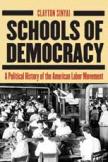Workers Unite
Some of my best friends (yes, I know it’s a cliché) are labor organizers. We tend to talk about the prospects of the labor movement, and the conversations quickly turn gloomy. The A.F.L.-C.I.O., now that its leader Andrew Stern and his brethren are leaving, is in tatters. The percentage of unionized Americans continues to plummet, and labor unions too often raid one another for members. Politically, organized labor faces a troubling situation, in which every branch of government is governed by pro-business Republicans.
And yet my friends stick it out. What else is there? they always ask me. What other political movement can confront the growing poverty in America in a realistic manner and touch the working lives of ordinary citizens? What other movement helps those without power achieve at least a modicum of decent living? Hopefulness amid evidence to the contrarythis seems the nature of our talks these days.
If we look back into the American past, we find reason for my friends’ tenacity. Labor once played a crucial role in American politics. Clayton Sinyai has written a book that reminds us of this important lesson. Though not entirely original in its outline or approach, it offers some insight into our current predicament.
Sinyai, a researcher for the Laborers’ International Union of North America, travels well-trod ground. Those who know the history of labor will not learn a great deal from his book. His cast of charactersstarting with the Knights of Labor and then turning to the American Federation of Labor (A.F.L.), which is challenged marginally by the Industrial Workers of the World (I.W.W.) and finally displaced by the Congress of Industrial Organizations (C.I.O.)will not startle anyone who has taken Labor History 101. Nonetheless, Sinyai offers some new interpretations of this familiar terrain.
It is refreshing, for instance, that the author avoids the typical business unionism take on the labor movement. Too often, labor histories have been written by new leftists eager to deride the practicality of those who prefer good contracts to Marxist dreams. Sinyai believes, for instance, that the A.F.L.the bête noire of new left labor historiansactually offered a democratic alternative to the Knights of Labor, the labor organization most radicals champion as standing in Jeffersonian opposition to modern industrialization. For sure, the A.F.L. focused its energy on organizing skilled craftsmen. Nonetheless, Sinyai believes, the A.F.L. carried on a proud tradition of voluntarism that engaged workers as participatory citizens in a robust republic. No compromise here, he suggests, rather a commitment both to American democracy and civic education.
It was the A.F.L. that challenged management’s attempt to control the work lives of ordinary workers, ultimately captured in the Ford-like assembly line, where each worker performed repetitive tasks (depicted comically in Charlie Chaplin’s Modern Times). Sinyai chastises new leftist labor historians who champion the rugged militancy of the I.W.W.’s western loggers and miners. Though the Wobblies might have been more radical, tough and macho, they never made much of an impact. It was the craft unions, Sinyai explains, that led the fight against mechanized work, not the I.W.W. The A.F.L. revitalized the fierce independence of Jeffersonian republicanism more than pie-in-the-sky radicals.
Of course, the A.F.L. eventually declined. During the 1930’s, American labor organizers grew weary of the way low-skilled workersespecially those in the mining, auto and steel industrieswere left out of negotiations. Thus was born the C.I.O. In noting its rise, Sinyai is on new ground once again, since he refuses to characterize the C.I.O.’s growth solely as a bottom-up initiative. Instead, he shows clearly how the federal governmentthrough the National Labor Relations Act, passed in the mid-1930’senergized the labor movement and built power from the top down as much as from the bottom up.
It is here that Schools of Democracy becomes less original. For Sinyai, the C.I.O. represents a bad turn. While the A.F.L. had a voluntarist and democratic vision, he points out, the C.I.O. embraced centralized power and a limited view of security for workers. By 1948, the author explains, America’s labor leaders had rejected the [skilled craftsmen’s] voluntarist ideals as unrealistic aspirations for the modern world. And as if the obvious needs restating, he argues: Workers could not be expected to approximate the civic character of Jefferson’s yeoman farmer when they confronted the vast political and corporate bureaucracies of postwar America.
To which a reader’s only response is well, of course. That, and a growing sense that Sinyai ignores the obvious: the postwar labor movement accomplished a great deal that, in retrospect, looks good, especially if compared to the mess we are in today. For sure, unions might have once been more robust and participatory than they became in postwar America. For sure, bureaucracy ossified, and unions became less democratic. But still, they offered more than low-wage work.
Sinyai, of course, knows this. He ends his book with a reference to Barbara Ehrenreich’s depressing stories about working at Wal-Mart. But he is too nostalgic for a type of civic participation that is long gone. His nostalgia misses the fact that what unions once offereda better standard of living for people who otherwise would have worked for chump changeseems that much more appealing, even without the promise of civic participation. I, for one, would settle for that, even if I am not sure how we get there.
This article also appeared in print, under the headline “Workers Unite,” in the April 24, 2006, issue.








